有點不自量力的“志文 新潮文庫 與主要國家文學簡史”。法國用五講(第五講待補)。那,英國的,類似呀,兄弟之邦嘛,但是,除了“青春文學”例子採用“蒼蠅王”,說不盡的莎士比亞採用的了不起的Hamlet 十世記憶……
六十而笠.笠詩社六十周年特展講座:我在笠的歲月
請問以下是莫渝在形容哪三位詩人?
1.「將冥想與沉思都化作徹底的寫實主義📝」。
2.「遊走現代、本土與抒情的等邊三角🔺」 。
3.「善用日語邏輯的思維模式與宗教氣氛,形成異質的語文體例📜」。
莫渝在1999年出版《笠下的一群:笠詩人作品選讀》中分享他對笠詩社的詩人觀點與作品解析。曾任《笠》詩刊主編的莫渝,藉由他的觀察、精闢的形容,讓詩人形象更活靈活現。本次講座延續出版📖,莫渝將分享更多在笠詩社發生的故事。
莫渝是詩人,也跨界到教職、譯介法國詩歌、撰寫評論等。曾獲優秀青年詩人獎、笠詩社詩翻譯獎等。出版詩集《無語的春天》、《土地的戀歌》等;翻譯《韓波詩文集》、《法國詩選》等書。創作多為關懷社會議題、亦有詠物抒情之詩。〈笠下的一群〉手稿複製品在臺北與臺南都有展出,歡迎到展場感受文字的力量、來參加講座聽莫渝述說在笠詩社的時光🕰️。
📍我在笠的歲月📍
時間|7/13(六)14:00-16:00 (13:30-14:00為報到時間)
地點|臺灣文學基地悅讀館(需脫鞋)
主講|莫渝(詩人)
報名|https://forms.gle/YoarozeEa1EfZDRm7
集章|參加活動可獲得紀念筆1枝(共5種款式)
解答|三位詩人分別為吳瀛濤、白萩、杜潘芳格✨
2016年12月27日 星期二
波特萊爾(Baudelaire, 1821-1867)
法.波特萊爾. 翻譯:莫渝. 書名:《惡之華》、《惡之花》. 出版社:志文出版社,新潮世界名著. 出版年:1985年九月初版.
這首值得一讀:【惡之華】被禁詩篇【吸血鬼的化身】,杜國清臺大版頁300-01。
Everyman's Library
"The Vampire's Metamorphoses" by Charles Baudelaire
The woman meanwhile, twisting like a snake
On hot coals and kneading her breasts against the steel
Of her corset, from her mouth red as strawberries
Let flow these words impregnated with musk:
— "I, I have moist lips, and I know the art
Of losing old Conscience in the depths of a bed.
I dry all tears on my triumphant breasts
And make old men laugh with the laughter of children.
I replace, for him who sees me nude, without veils,
The moon, the sun, the stars and the heavens!
I am, my dear scholar, so learned in pleasure
That when I smother a man in my fearful arms,
Or when, timid and licentious, frail and robust,
I yield my bosom to biting kisses
On those two soft cushions which swoon with emotion,
The powerless angels would damn themselves for me!"
When she had sucked out all the marrow from my bones
And I languidly turned toward her
To give back an amorous kiss, I saw no more
Than a wine-skin with gluey sides, all full of pus!
Frozen with terror, I closed both my eyes,
And when I opened them to the bright light,
At my side, instead of the robust manikin
Who seemed to have laid in a store of blood,
There quivered confusedly a heap of old bones,
Which of themselves gave forth the cry of a weather-cock
Or of a sign on the end of an iron rod
That the wind swings to and fro on a winter night.
On hot coals and kneading her breasts against the steel
Of her corset, from her mouth red as strawberries
Let flow these words impregnated with musk:
— "I, I have moist lips, and I know the art
Of losing old Conscience in the depths of a bed.
I dry all tears on my triumphant breasts
And make old men laugh with the laughter of children.
I replace, for him who sees me nude, without veils,
The moon, the sun, the stars and the heavens!
I am, my dear scholar, so learned in pleasure
That when I smother a man in my fearful arms,
Or when, timid and licentious, frail and robust,
I yield my bosom to biting kisses
On those two soft cushions which swoon with emotion,
The powerless angels would damn themselves for me!"
When she had sucked out all the marrow from my bones
And I languidly turned toward her
To give back an amorous kiss, I saw no more
Than a wine-skin with gluey sides, all full of pus!
Frozen with terror, I closed both my eyes,
And when I opened them to the bright light,
At my side, instead of the robust manikin
Who seemed to have laid in a store of blood,
There quivered confusedly a heap of old bones,
Which of themselves gave forth the cry of a weather-cock
Or of a sign on the end of an iron rod
That the wind swings to and fro on a winter night.
*
This selection of poems from across the ages brings to life a staggering array of zombies, ghosts, vampires, and devils. Our culture's current obsession with zombies and vampires is only the latest form of a fascination with crossing the boundary between the living and the dead that has haunted humans since we first began writing. The poetic evidence gathered here ranges from ancient Egyptian inscriptions and the Mesopotamian epic Gilgamesh to the Greek bard Homer, and from Shakespeare and Milton and Keats to Emily Dickinson and Edgar Allan Poe. Here too are terrifying apparitions from a host of more recent poets, from T. S. Eliot and Sylvia Plath to Rita Dove and Billy Collins, from Allen Ginsberg and H. P. Lovecraft to Mick Jagger and Shel Silverstein. The result is a delightfully entertaining volume of spine-tingling poems for fans of horror and poetry both. READ an excerpt here: http://knopfdoubleday.com/book/240438/poems-dead-and-undead/
Erotic illustrations for Baudelaire’s ‘Les Fleurs du Mal’ (NSFW)
From the DM archives.
EROTIC ILLUSTRATIONS FOR BAUDELAIRE’S ‘LES FLEURS DU MAL’

An illustration from 1935 by Italian-born artist Carlo Farneti for a posthumous edition of Charles Baudelaire’s book of poetry ‘Les Fleurs du Mal.’
“That heart which flutters like a fledgling bird,
I shall tear, bleeding, from his breast, to pitch
It blandly in the dust without a word
To slake the hunger of my favorite bitch.”
—a passage from Charles Baudelaire’s poetry book, Les Fleurs du Mal.
When French poet Charles Baudelaire first published his poetry book Les Fleurs du Mal(The Flowers of Evil) in 1857 it caused quite the scandal. Baudelaire, his publisher Poulet Malassis and the book’s printer were all prosecuted for creating “an insult to public decency.” Baudelaire would eventually be convicted on two charges—obscenity and blasphemy. He was also forced to remove several poems from the book when it was republished in 1861. Below is a portion from Les Fleurs du Mal “Une Charogne” (“A Carcass”) in which Baudelaire beautifully romanticizes a decomposing corpse:
“The blow-flies were buzzing round that putrid belly,
From which came forth black battalions
Of maggots, which oozed out like a heavy liquid
All along those living tatters.Then tell the vermin as it takes its pleasance
And feasts with kisses on that face of yours,
I’ve kept intact in form and godlike essence
Our decomposed amours!”
The controversy over Les Fleurs du Mal would eventually lead to the demise of Baudelaire’s career as a poet. Heartbreakingly, Baudelaire would pass away in 1867—ten years after the publication of Les Fleurs du Mal, addicted to opium, penniless and in a state of perpetual paralysis. Les Fleurs de Mal was published yet again in 1868 to include previously unpublished poems written by the poet. This publication would reignite interest in his work which would continue to grow in the years following his death. In 1935 Italian artist Carlo Farneti created a series of evocative illustrations for Les Fleurs du Mal for Parisian bookstore Gibert Jeune. Farneti had relocated to France in 1926 and quickly became a sought-after artist creating illustrations for books by renowned French novelist Émile Zola and Edgar Allen Poe (who Baudelaire referred toas his “twin soul.”) Twelve of Farneti’s exquisite illustrations for Les Fleurs du Mal follow—some are gorgeously NSFW.



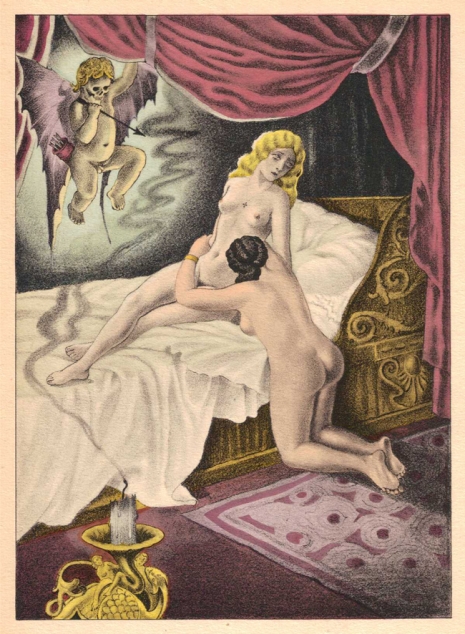


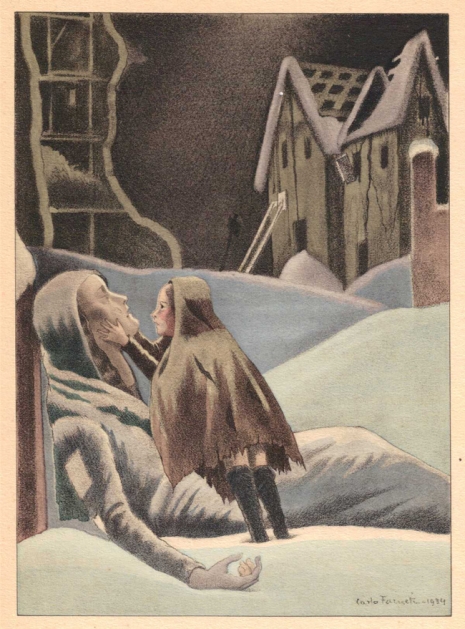
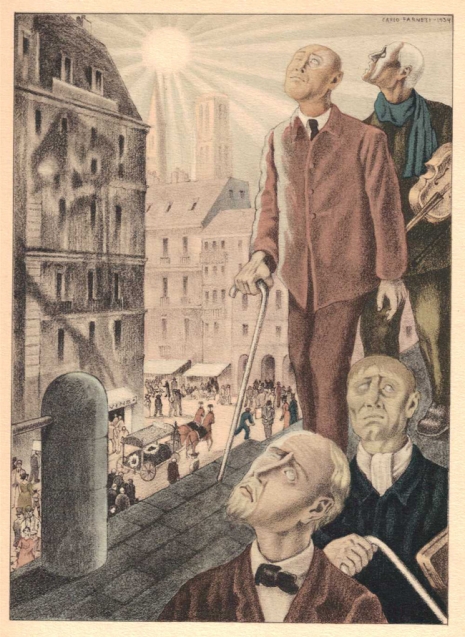
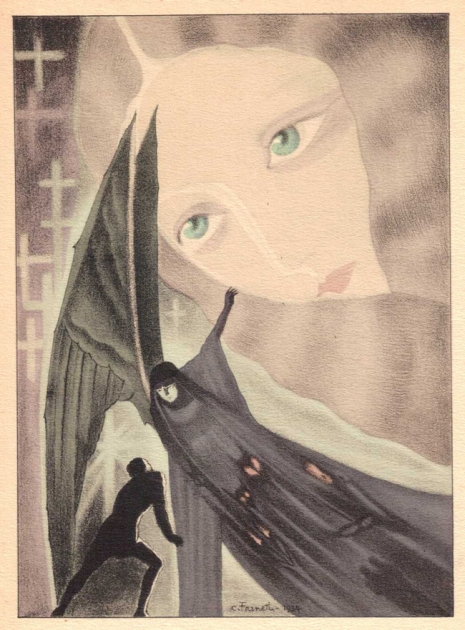
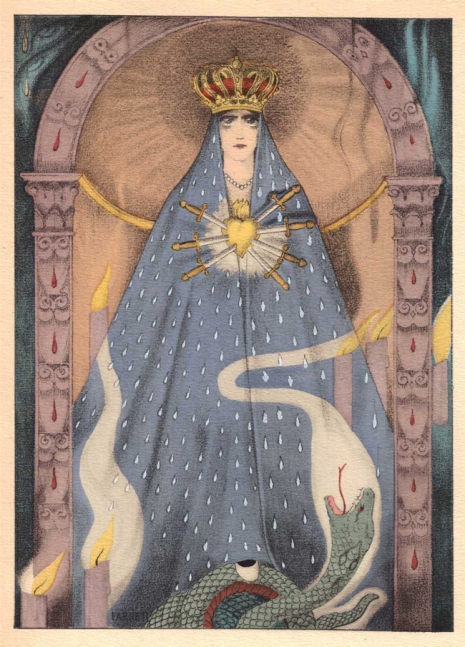
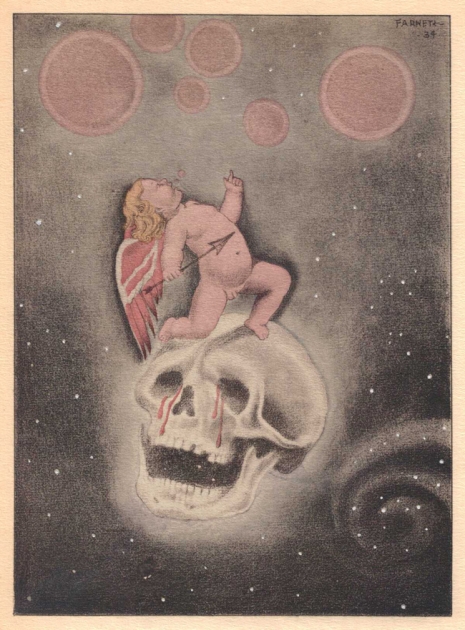
HT: 50 Watts



No comments:
Post a Comment